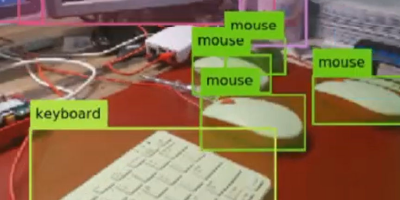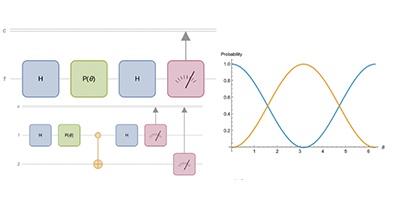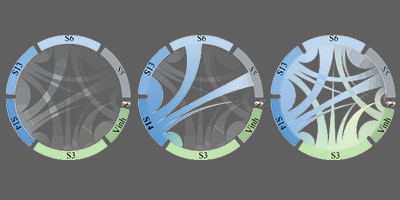Gardening à la Gardner
When looking through the posts on Wolfram Community, the last thing I expected was to find exciting gardening ideas.
The general idea of Ed Pegg’s tribute post honoring Martin Gardner, “Extreme Orchards for Gardner,” is to find patterns for planting trees in configurations with constraints like “25 trees to get 18 lines, each having 5 trees.” Most of the configurations look like ridiculous ideas of how to plant actual trees. For example:

I have a seven-acre apple orchard with 200+ trees in New York’s Adirondack Park, and so I read “Extreme Orchards for Gardner” as a gardener first. Of course, Pegg’s post was never intended as a proposal for how to plant actual orchards, but as I live in the middle of an orchard, I can’t help wondering, what if you did plant orchards this way?
When considering this as an actual planting pattern, we should borrow that character ubiquitous in physics: the observer. To the observer on the ground, only the center cluster would look much like an orchard; the trees at the vertices would appear to have nothing much to do with the rest.
One of my favorite physics jokes is the one about the theoretical physicist who loses his job as a professor and has to go to work as a milkman. (Once upon a time, milk was delivered to people’s houses by “milkmen.”) After a few weeks on the job, the physicist just can’t stand not being able to give lectures. So he assembles his colleagues in front of a blackboard, draws a circle on the board and begins by saying, “Consider a spherical cow of uniform density.” The representation of orchards by Martin Gardner, Branko Grünbaum and such in the usual rendition of the orchard planting problem is to real orchards as spherical cows are to the animals who produce the milk you drink. So, to some extent, the fact that trees are not points and need a certain spacing is an unfair criticism. Nonetheless, since every way I look out my windows I see real apple trees, I feel compelled to point this out. (I think Grünbaum, who was my professor many years ago and who encouraged us to reality-test our mathematical ideas, would approve.)
This is even more true for this configuration involving rows of six “trees.” Just how much land would it take to plant an orchard like this using real trees? No one would do this.
Pegg also shows some more possible configurations—like these, in which the lines pass through exactly four trees each. For actual, rather than hypothetical, trees, some of these look a bit more workable.
My own apple trees, planted in the mid-1980s, are planted in rows, which is practical if a bit boring.
There are pragmatic constraints involved in planting apple trees. The orchardist needs access to the trees from two sides, both for maintenance (pruning, spraying, etc.) and to harvest apples. Assuming semi-dwarf trees, this involves aisles with a minimum width of about 22 feet (ca. 6.7 meters), starting from the center of each trunk. The trees should be planted no closer than intervals of 16 feet (ca. 4.9 meters) to give them enough air and light.
Only configurations in which there is a small variation in the segments connecting trees could realistically be planted as something that would, on the ground, resemble an orchard. Most of the configurations would require an enormous amount of land and so are mostly mathematical abstractions rather than something one could really implement.
But the configuration on the lower left in Pegg’s four-tree grouping looks like something one could actually plant. Like so:
One advantage I see in the configurations with a small variation in segment length is that planting a portion of the orchard as pentagons within pentagons reduces the amount of grass under the trees to be maintained, thus significantly reducing mowing and therefore labor and gasoline costs. So it is not completely foolish to consider planting at least a small orchard this way.
I am attracted to the 25-tree pentagon configuration because of its empty center circle, creating a private grove space. Taking into account an air gap around the outside, my guess is that a circle in the field of about 125 feet in diameter should be big enough. That center circle could, for example, hold a very nice circle of wildflowers 20 feet across for bee forage, maybe some beehives in the center, and still leave room for equipment to navigate.
Another advantage: this would be a good layout for planting five types of trees in groups of five. They could then be easily identified in their mini-groves and harvested together. The more I thought about it, the more this became something I might actually want to do. I started shopping online for heritage varieties of apple trees, looking around at my farm for the right place to put the new trees, imagining new designs…. Hmm.
Pegg, on the other hand, is more concerned with finding new solutions to the abstract version of the orchard problem, which are indeed quite beautiful, if impractical for the planting of trees:
These contemplations make me want to go deeper into mathematical patterns to see what else might be plantable. Maybe this last “orchard” plot might work with bulbs.








Yes, bulbs would be a perfect item with which to experiment with these patterns.And they would provide results, if planted in autumn, by spring. And the plants photograph well. This is a wonderful blog post — thanks!
Love the idea of bulbs or mixed herbs in the old English style – combined with suitable trees at the outliers. Could be combined with Islamic tiling patterns/Penrose tiling as well… expect to see some interesting planting in the future. Lovely post thanks.
We planted 25 heirloom cider apple trees in the nested pentagon configuration today. I thought I could get away with planting within a pentagon that was 50 ft on a side, but that was a little too small, as some of the innermost trees were only about 12 1/2 feet apart. So I enlarged the plan to 60 feet on a side. And just when I thought I was ready for the arborist and his crew to come dig the holes, I realized that one tree was now too close to the driveway. The size we ended up planting at was 53 ft on a side for the big pentagon and 15 feet on a side for the small ones.
It took me 6 or 8 hours of fiddling (and a lot of walking) to get all the tree sites marked properly. The arborist crew of 3 people installed it in about 3 hours, which is pretty fast given that our soil is Vergennes Clay.
Happy Arbor Day!